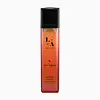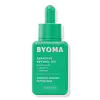What's inside
What's inside
 Key Ingredients
Key Ingredients

 Benefits
Benefits

 Concerns
Concerns

 Ingredients Side-by-side
Ingredients Side-by-side

Water
Skin ConditioningDimethicone
EmollientGlycerin
HumectantSodium Hyaluronate Crosspolymer
HumectantPentylene Glycol
Skin ConditioningPolymethyl Methacrylate
Dimethicone Crosspolymer
Emulsion StabilisingRetinol
Skin ConditioningSodium Hyaluronate
HumectantCopper Palmitoyl Heptapeptide-14
Skin ConditioningHeptapeptide-15 Palmitate
Skin ConditioningPalmitoyl Tripeptide-1
Skin ConditioningPalmitoyl Tetrapeptide-7
Skin ConditioningLactic Acid/Glycolic Acid Copolymer
Skin ConditioningTocopherol
AntioxidantCeramide NP
Skin ConditioningSodium PCA
HumectantGlycine Soja Extract
Skin ConditioningCaprylic/Capric Triglyceride
MaskingHydroxyethyl Acrylate/Sodium Acryloyldimethyl Taurate Copolymer
Emulsion StabilisingAcrylates/C10-30 Alkyl Acrylate Crosspolymer
Emulsion StabilisingCetyl Palmitate
EmollientSodium Hydroxide
BufferingDimethicone/PEG-10/15 Crosspolymer
Dipotassium Glycyrrhizate
HumectantPolysorbate 60
EmulsifyingPolysorbate 20
EmulsifyingPolyvinyl Alcohol
Squalane
EmollientLaureth-23
CleansingTrideceth-6 Phosphate
EmulsifyingXanthan Gum
EmulsifyingCarbomer
Emulsion StabilisingButylene Glycol
HumectantDisodium EDTA
Caprylyl Glycol
EmollientChlorphenesin
AntimicrobialPhenoxyethanol
PreservativeWater, Dimethicone, Glycerin, Sodium Hyaluronate Crosspolymer, Pentylene Glycol, Polymethyl Methacrylate, Dimethicone Crosspolymer, Retinol, Sodium Hyaluronate, Copper Palmitoyl Heptapeptide-14, Heptapeptide-15 Palmitate, Palmitoyl Tripeptide-1, Palmitoyl Tetrapeptide-7, Lactic Acid/Glycolic Acid Copolymer, Tocopherol, Ceramide NP, Sodium PCA, Glycine Soja Extract, Caprylic/Capric Triglyceride, Hydroxyethyl Acrylate/Sodium Acryloyldimethyl Taurate Copolymer, Acrylates/C10-30 Alkyl Acrylate Crosspolymer, Cetyl Palmitate, Sodium Hydroxide, Dimethicone/PEG-10/15 Crosspolymer, Dipotassium Glycyrrhizate, Polysorbate 60, Polysorbate 20, Polyvinyl Alcohol, Squalane, Laureth-23, Trideceth-6 Phosphate, Xanthan Gum, Carbomer, Butylene Glycol, Disodium EDTA, Caprylyl Glycol, Chlorphenesin, Phenoxyethanol
Ingredients Explained
These ingredients are found in both products.
Ingredients higher up in an ingredient list are typically present in a larger amount.
This ingredient is an emollient, solvent, and texture enhancer. It is considered a skin-softener by helping the skin prevent moisture loss.
It helps thicken a product's formula and makes it easier to spread by dissolving clumping compounds.
Caprylic Triglyceride is made by combining glycerin with coconut oil, forming a clear liquid.
While there is an assumption Caprylic Triglyceride can clog pores due to it being derived from coconut oil, there is no research supporting this.
Learn more about Caprylic/Capric TriglycerideSqualane is an emollient that helps the skin hold onto moisture. It's an oily liquid that occurs naturally in certain types of fish and plant oils.
Because squalane boosts hydration in the skin, it also comes with plenty of benefits: it is an antioxidant and can help fight free radicals and skin damage. Squalane is also found to have a detoxifying effect when applied.
Squalane comes from squalene, which occurs naturally within the sebum of our skin. It is one of the oils our skin produces to keep itself hydrated. Squalane is the hydrogenated version of squalene and has a longer shelf life.
Research shows that squalane is non-irritating (even at 100% concentration).
In general, it's a fantastic ingredient. It does a great job at hydrating the skin, and it's suitable for those with sensitive skin.
The source of squalane may impact malassezia / fungal acne. This is because olive oil derived squalane can contain impurities such as fatty acids and plant waxes. Sugarcane derived squalane is recommended for anyone with malassezia concerns.
Is squalane vegan?
This depends on the source. Squalane can be derived from both plants and animals. Most squalane used in skincare comes from plants.
Please note: the source of squalane is only known if disclosed by the brand. We recommend reaching out to the brand if you have any questions about their squalane.
Read more about squalene with an "e".
Is squalane an oil?
Squalane is often called an oil, but it’s technically not; it’s a hydrocarbon, meaning it’s only made of carbon and hydrogen, unlike true oils which are triglycerides made of fatty acids and glycerol.
The term “oil-free” isn’t regulated, so companies can define it however they want. Some exclude all oils, while others just avoid mineral oil or comedogenic oils.
While some people avoid oils thinking they cause breakouts, the right kind of oil (or oil-like ingredient like squalane) can actually help balance and hydrate your skin. It’s worth testing out simple oils or squalane to see what works best for your skin.
Learn more about SqualaneTocopherol (also known as Vitamin E) is a common antioxidant used to help protect the skin from free-radicals and strengthen the skin barrier. It's also fat soluble - this means our skin is great at absorbing it.
Vitamin E also helps keep your natural skin lipids healthy. Your lipid skin barrier naturally consists of lipids, ceramides, and fatty acids. Vitamin E offers extra protection for your skin’s lipid barrier, keeping your skin healthy and nourished.
Another benefit is a bit of UV protection. Vitamin E helps reduce the damage caused by UVB rays. (It should not replace your sunscreen). Combining it with Vitamin C can decrease sunburned cells and hyperpigmentation after UV exposure.
You might have noticed Vitamin E + C often paired together. This is because it is great at stabilizing Vitamin C. Using the two together helps increase the effectiveness of both ingredients.
There are often claims that Vitamin E can reduce/prevent scarring, but these claims haven't been confirmed by scientific research.
Learn more about Tocopherol